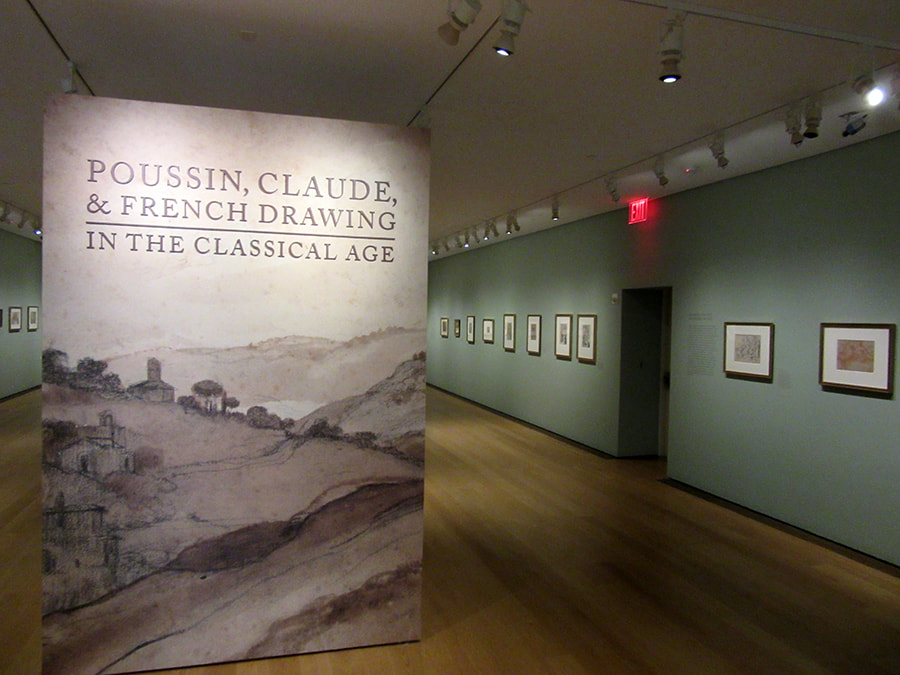|
“Poussin, Claude and French Drawing in the Classical Age,” an exhibition at the Morgan Library and Museum in New York, looks at the role of drawing during one of the peak periods in French culture.
Although France had long been a powerful European nation, it rose to new heights in the 17th century during the reigns of Louis XIII and Louis XIV. In essence, it became the leading power in Europe politically and militarily. At the same time, the arts flourished under the patronage of the French royal court and the ducal court of Lorraine, then an independent nation but later to become part of France. During this time, French artists often traveled to Rome to study both the work of the ancients asforma well as the Italian Renaissance masters. When they returned to France, they brought with them new ideas that stimulated the native talent. As a result, Paris became a center for artistic activity. Drawings served three purposes. First, artists often made drawings to capture scenes that they encountered. Afterall, they did not have iPhones. Second, drawing were used to make studies in preparation for paintings and other more complex works. Third, drawings were done as completed works. This was often the case with portrrait drawings, which members of the court collected and placed into albums. Two of the most important French artists of this period were Nicolas Poussin and Claude Gelleee – better known as Claude Lorrain. Poussin was from France but first achieved success in Rome. In fact, he only returned to France because he was summoned home by the King and then he only remained there for two years. Poussin was very interested in classical antiquity and his work often focused on classical mythology, history and biblical scenes. His drawings were done in preparation for his paintings. The drawings in the exhibit show that he felt free to use a looser style that at time borders on the abstract in his drawings rather than the more precise style of his paintings. Claude Lorrain also studied in Rome and also eventually returned to settle in that city. Lorrain was interested in nature as a manifestation of the divine. He would do sketches directly from nature but he would alsoDaniel rearrange features in his finished landscapes to accord with idealized principles. I found his more free flowing sketch style more appealing than his more formal finished style. Poussin and Lorrain are not the only artists represented in this exhibit. We see that other artists were heavily influenced by classicism while at the same time other artists were developing naturalism. In the former area, the style is too cold and impersonal for me. In the latter group, Simon Vouet's Study of a Woman Seated on a Step has an informality that appeals to modern tastes. However, the presence of a study of hand on the same piece of paper reveals that it was only meant as a preparatory piece. Perhaps the most appealing of the drawings in the exhibition are the portraits. Vout's portrait of his patron Louis XIII presents the sitter as an affable human being rather than a remote monarch. In contrast, Daniel Dumononstier's Portriat of A Gentleman of the French Court is technically excellent but the sitter comes across as quite cold. One thing that surpised me was the color of the drawings. Inasmuch as the works are nearly four centuries old, one might well expect yellowed paper and faded ink. However, quite a few of the works were done on light brown paper and used brown ink. Thus, they probably looked much the same four centuries ago as they do today. The exhibition includes more than 50 drawings. Most of these are from the Morgan's own collection but they have been supplemented with works from the Metropolitan Museum of Art and from private collections. The placards next to the various pieces are excellent. In addition, there is a complimentary booklet discussing the works. I feel this is particularly important because for the general public, this is not a particularly familiar period of French art and the information provided by the Morgan explains its significance. This makes it a more enjoyable as well as educational experience. |
AuthorRich Wagner is a writer, photographer and artist. Archives
November 2018
Categories
All
|

 RSS Feed
RSS Feed